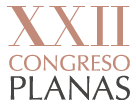PROFESORES

Dr. Massimiliano Brambilla
ITALIA
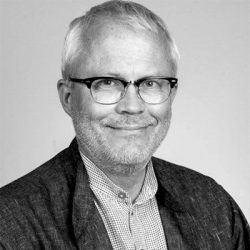
Dr. Håkan Brorson
SUECIA
Resumen
¿Hay edema en el lipedema?
El lipedema es una enfermedad crónica que se caracteriza por un aumento desproporcionado del tejido adiposo y dolor en las piernas y, a veces, los brazos de las mujeres. Se desconoce en gran medida su prevalencia. El aumento desproporcionado de peso alrededor de las piernas suele iniciarse en fases de aumento de peso relacionadas principalmente con cambios hormonales, como la pubertad, el embarazo y la menopausia. Años más tarde, y sobre todo tras un mayor aumento de peso, puede aparecer dolor o sensación de pesadez intensa en las piernas, momento en el que la afección cumple los criterios diagnósticos del lipedema.
El lipedema se confunde a menudo con el linfedema; como consecuencia, muchos médicos prescriben una terapia linfática descongestiva. El lipedema no incluye el edema ni hay pruebas científicas de insuficiencia linfática. Por este motivo, la terapia linfática descongestiva es un tratamiento inadecuado para los pacientes con lipedema puro. También existe una variación considerable en la forma en que los médicos abordan el lipedema en los distintos países. Esta falta de homogeneidad afecta naturalmente a los pacientes, que ya están angustiados por el dolor que les causa su afección, así como por el hecho de que sus piernas no cumplan los estándares del ideal de belleza actual.
Cirugía del lipedema
Los expertos del Foro Europeo del Lipedema creen que los beneficios de la liposucción dependen en gran medida de una selección de pacientes claramente definida, ya que no todos los pacientes con lipedema se beneficiarían de la liposucción. Para que los pacientes se beneficien de este procedimiento, los participantes acordaron los siguientes criterios presentados en el Documento de Consenso Internacional de 2020:
- Los síntomas persisten a pesar de al menos 12 meses de tratamiento conservador.
- El paciente tiene una discapacidad funcional considerable (por ejemplo, movilidad restringida).
- El peso del paciente se ha mantenido estable durante al menos 12 meses. Esto reduce el riesgo de que se anulen los efectos de la liposucción debido al aumento de peso postoperatorio.
- Se dispone de una evaluación psicológica preoperatoria para descartar cualquier trastorno alimentario o problema de salud mental relevante que pueda dificultar el éxito sostenido del tratamiento.
- IMC no superior a 35 kg/m2. La liposucción no es una opción de tratamiento para pacientes con un IMC > 35 kg/m2 y obesidad central (WHtR > 0,5). En ausencia de esta última, la liposucción puede realizarse en pacientes con un IMC superior, aunque esto es extremadamente raro.
CV Summary
Håkan Brorson, MD, PhD
Profesor Håkan Brorson, MD, PhD, Cirujano Plástico, Departamento de Ciencias Clínicas de Malmö, Universidad de Lund, Centro Oncológico de la Universidad de Lund. Su investigación se centra en la deposición de tejido adiposo en el linfedema mediante TC, IRM/espectroscopia y absorciometría de rayos X de doble energía para anatomía macroscópica, microarray y RT-PCR para estudios genéticos. Ha formado a 43 equipos de todo el mundo para tratar el linfedema con liposucción. Ha impartido 308 conferencias magistrales, clases magistrales y conferencias invitadas. Ha recibido 21 premios nacionales e internacionales y es autor y coautor de 221 artículos originales, revisiones y actas, editor/coeditor de 6 libros y autor de 60 capítulos de libros. Fue presidente del 23 Congreso Mundial de la Sociedad Internacional de Linfología en Malmö, Suecia en 2011 y presidente de la Sociedad Internacional de Linfología 2013-2015. En 2010 fue nombrado Profesor en Escuela de Graduados, Asociación Médica Argentina (EGAMA), Buenos Aires, Argentina y en 2022 nombrado Profesor Honorario en Macquarie University, Sydney.
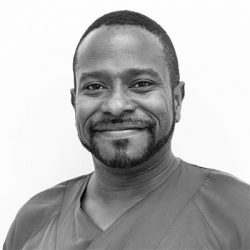
Dr. Marlon E. Buncamper
HOLANDA
Resumen
La (re)construcción del pene
Los símbolos de los genitales humanos han sido durante siglos y en muchas culturas la personificación de la fertilidad, el libertinaje e incluso lo divino. No es de extrañar que, como cirujano reconstructor, cuando se reconstruyen los genitales no sólo se aborden los aspectos funcionales de estos órganos, sino también sus contextos sociales y culturales.
A diferencia de la vagina, el pene humano es siempre visible en el varón erguido sin ropa y, como tal, se ha asociado a menudo con la virilidad y el estatus social.
Por lo tanto, la (re)construcción del pene (faloplastia) es una de las operaciones más difíciles para nosotros, los cirujanos reconstructivos. No sólo tenemos que hacer un falo que sirva para orinar, sino también para la penetración, la inseminación y la aceptación social. Pero como cirujanos también debemos tener en cuenta el bienestar de nuestros pacientes minimizando la morbilidad de las intervenciones.
Las razones para que un paciente solicite una faloplastia son muchas; amputaciones, enfermedades del desarrollo sexual, transexualidad por nombrar algunas. Las opciones para reconstruir el falo son muchas con muchos sitios donantes cada uno con sus propias desventajas.
En esta charla describiré cómo guiamos a nuestros diversos pacientes en su camino hacia la elección de la operación de faloplastia que mejor se adapte a sus necesidades.
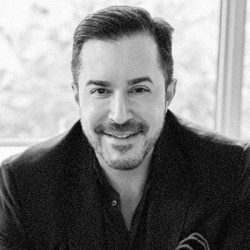
Dr. Daniel Careaga
EEUU
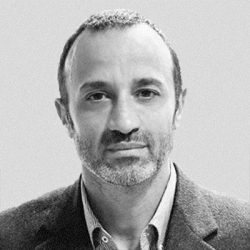
Dr. George Charonis
GRECIA
Resumen
Levantamiento de cejas y frente
El párpado superior las cejas y la frente deben considerarse como un conjunto anatómico y abordarse como tal durante el rejuvenecimiento quirúrgico del área periorbitaria. La ptosis de la ceja acompaña con bastante frecuencia a la dermatocalasia del párpado superior y la falta de tratamiento a menudo conduce a resultados subóptimos y a la insatisfacción del paciente.
Esta presentación se centrará en las dos técnicas quirúrgicas realizadas con mayor frecuencia por el autor para el rejuvenecimiento de cejas y frente: el abordaje en el plano profundo y un abordaje subcutáneo.
El abordaje en el plano profundo actualmente se realiza a través de 2 (o 4) pequeñas incisiones detrás de la línea del cabello sin el uso de un endoscopio con énfasis en liberar completamente todas las uniones y adherencias de la ceja al borde orbital.
El abordaje subcutáneo utiliza 2 incisiones pretriciales con la disección que se extiende hacia abajo hasta el borde orbitario superolateral.
Se presentarán las indicaciones, pasos quirúrgicos, resultados, cuidados postoperatorios, ventajas, desventajas y complicaciones de cada abordaje.
Blefaroplastia inferior con transposición de grasa.
La comprensión contemporánea del proceso de envejecimiento del área periorbitaria ha llevado a un cambio de paradigma para el rejuvenecimiento quirúrgico de los párpados inferiores. La deflación, con la pérdida de volumen resultante, crea cambios en el contorno de la superficie (colinas y valles) y una zona de demarcación obvia entre el párpado inferior y el tercio medio del rostro.
La cirugía de blefaroplastia inferior moderna tiene como objetivo abordar estos cambios evitando las técnicas sustractivas en favor de los enfoques voluminizadores.
En esta presentación, se presentará la técnica quirúrgica preferida del autor. El procedimiento se realiza a través de una ruta transconjuntival (ya que se ha demostrado en la literatura que es superior al abordaje transcutáneo al minimizar la posibilidad de retracción palpebral postoperatoria). Los pedículos de grasa nasal y central se preparan y movilizan por completo para la transposición y el pedículo de grasa lateral se extirpa de forma conservadora. Después de la liberación de los ligamentos de retención del orbicular, la disección se lleva a cabo en el plano subperióstico y los pedículos se transponen y suturan externamente a nivel del maxilar.
Entonces se pueden llevar a cabo procedimientos accesorios. A menudo, se puede realizar la suspensión del canto lateral a través de una cantopexia cerrada estéticamente agradable. Si hay dermatocalasia significativa, se puede agregar una escisión conservadora de la piel a través de un pellizco de piel o un colgajo cutáneo.
Se presentará la técnica quirúrgica, los cuidados postoperatorios, los resultados y las complicaciones de este procedimiento.
CV Summary
El Dr. Charonis estudió Medicina en la Universidad Nacional de Atenas, se especializó en Oftalmología en la Universidad de Louisville, KY, EE. UU. y realizó estudios de posgraduación en Cirugía Estética y Reconstructiva Orbitofacial en el Jules Stein Eye Institute de UCLA. Obtuvo su doctorado en Medicina en la Universidad Nacional de Atenas.
Es diplomado de la Junta Estadounidense de Oftalmología, miembro de la Academia Estadounidense de Oftalmología y miembro de pleno derecho de ASOPRS y ESOPRS. y actualmente es miembro del Comité de ESOPRS. Actualmente es el presidente de la Sociedad Helénica de Oftalmología.
Es el fundador y presidente del Athens Vision Eye Institute en Atenas, Grecia. Sus intereses científicos son la cirugía estética y reparadora de párpados, la cirugía lagrimal y la cirugía de descompresión orbitaria.
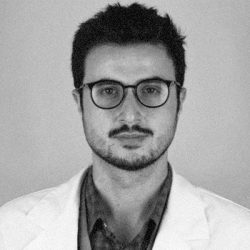
Dr. Erhan Coşkun
TURQUÍA
Resumen
Preservación dorsal del cartílago.
Las técnicas de preservación dorsal no son nuevas, pero se han hecho mucho más populares en los últimos años entre muchos cirujanos de todo el mundo. Existen principalmente 2 tipos de preservación dorsal. El primero es la preservación dorsal total, también conocida como «letdown», y el segundo es la preservación dorsal sólo del cartílago, también conocida como técnica de Ishida. En la actualidad, también se utiliza comúnmente la preservación dorsal en T con tira baja (descrita por el Dr. Baris) o con tira alta (técnica de Robotti). En esta conferencia nos centraremos en la preservación del cartílago dorsal y la preservación de la T dorsal con tira septal baja, e incluiremos vídeos quirúrgicos y presentaciones de casos clínicos.
Poligonoplastia cerrada con preservación de ligamentos e injertos de punta
La nariz se compone de mucosa, hueso, cartílago, tejidos blandos, incluidos los ligamentos suspensorios y de sostén, y capas de piel. Esta conferencia se centrará en las incisiones, los planos de disección, las disecciones de ligamentos y la reparación de los ligamentos, la poligonoplastia y los injertos de punta en la rinoplastia cerrada con vídeos quirúrgicos y presentaciones de casos clínicos.
Cómo manejar los problemas de la vía respiratoria con técnica de preservación dorsal y tira septal baja
Las desviaciones septales graves suelen originarse en el paladar y en estructuras de la base craneal como la placa perpendicular del hueso etmoides, el hueso vómer y la cresta maxilar. La septoplastia de puerta batiente de Cottle que se utiliza en la preservación dorsal de la tira septal baja puede separar el cartílago cuadrangular de estas estructuras profundas desviadas y dar la posibilidad de mejorar los problemas funcionales de las vías respiratorias. Las técnicas de preservación dorsal también son prometedoras para corregir las desviaciones dorsales axiales, con injertos dorsales mínimos para lograr resultados predecibles a largo plazo. Esta conferencia se centrará en la septoplastia de puerta batiente de Cottle con técnicas de preservación dorsal para corregir desviaciones septales graves que causan problemas funcionales de las vías respiratorias, así como las desviaciones dorsales axiales que provocan resultados estéticos no deseados, con vídeos quirúrgicos y presentaciones de casos clínicos.
CV Summary
El Dr. Erhan Coşkun se graduó en la Facultad de Medicina de Hacettepe English (ANKARA) en 2007 y finalizó su formación en cirugía plástica, reconstructiva y estética en el Hospital de la Facultad de Medicina de la Universidad de Başkent (ANKARA) en 2015. El Dr. Coşkun trabajó en todos los campos de la cirugía plástica. Su trabajo en los últimos 5 años se centró especialmente en la rinoplastia. Realiza 4 a 5 rinoplastias a la semana en su mayoría primarias y rinoplastias secundarias con cartílagos costales. Casi todas sus rinoplastias primarias las realiza con técnicas de preservación cerradas.
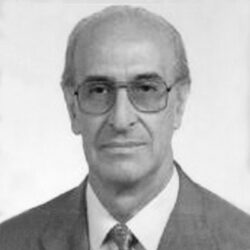
Dr. Rafael de la Plaza
ESPAÑA
Resumen
La difusión de la cirugía estética en los Países del Este tras la caída del muro de Berlín
Una vez más la Familia Planas me honra invitándome a dar una conferencia en sus magistrales cursos y congresos, en esta ocasión la que conmemora el recuerdo del Dr. Javier Bisbal, excelente cirujano y fiel colaborador en el desarrollo docente de esta prestigiosa Institución.
El Dr. Jorge Planas me dijo que eligiera libremente el tema de mi ponencia que he titulado “La difusión de la cirugía estética en los Países del Este tras la caída del muro de Berlín”.
En el año 1993 se celebró en Berlín “ The Seven Congress European Section IPRAS”. Fue un congreso extraordinario. Pero además, dada su situación geográfica y la apertura hacia occidente en los Países del Este, un cierto número de cirujanos plásticos de esos países concurrieron a dicho congreso, interesados en todos los aspectos de nuestra especialidad pero de manera selectiva en lo concerniente a la Cirugía Estética, porque esta rama estaba vetada desde la Segunda Guerra Mundial en dichos países.
A semejanza del Profesor Jaime Planas, siempre he tenido una obsesión por la enseñanza en los Servicios que fundé en Madrid y en los cargos internacionales que me tocó desempeñar hasta mi jubilación en el año 2.003.
En mi disertación les referiré sucintamente el éxito y los avatares de los cursos realizados, el primero de ellos tempranamente en 1.994 en la centenaria Charles University de Praga con el título First Central European Course on Aesthetic Surgery.
CV Summary
DR. RAFAEL DE LA PLAZA FERNÁNDEZ
Licenciado en Medicina y Cirugía. Madrid 1959.
Especialista en Cirugía Plástica y Reparadora.
Formación básica en Madrid.
Un año y seis meses en Paris (Hospitales Foch, Nanterre e Ivry ).
Tres años en Inglaterra (Queen Victoria Hospital y Birmingham Accident Hospital).
CARGOS DESEMPEÑADOS
Fundador y Director del Centro de Quemados y Cirugía Plástica de la Cruz Roja Española.
Fundador y Jefe de Servicio de Cirugía Plástica del Instituto Nacional del Cáncer.
Jefe de la Unidad de Cirugía Plástica y Estética de la Clínica La Luz.
ACTIVIDADES Y HONORES INTERNACIONALES
Director de la Sección de Cirugía Estética de la FILACP.
Presidente de la FILACP.
Presidente de EURAPS.
Jefe del Departamento de Relaciones Internacionales del Consejo General de Colegios Médicos de España.
Fundador y Editor del “Internacional Video journal of Plastic and Aesthetic Surgery”.
Presidente Honorario de “L’Amical Internationale di Chirurgie de la Main”.
Miembro Honorario o correspondiente de 11 Sociedades Científicas extranjeras e internacionales.
PUBLICACIONES CIENTÍFICAS
45 Publicaciones y 28 films y videos en distintas materias de Cirugía Plástica y Estética.
Editor del libro “El cáncer de Mama y su Reconstrucción.
Participación con diversos capítulos en 8 libros.
Fundador de la Revista Española de Cirugía Plástica.
CONFERENCIAS Y COMUNICACIONES
Más de cuatrocientas aportaciones a Congresos, Simposios y Cursos nacionales e internacionales.
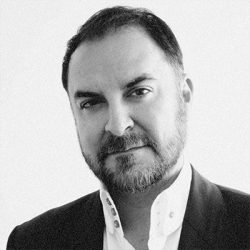
Dr. Ashkan Ghavami
EEUU
CV Summary
Dr. Ashkan Ghavami
El Dr. Ghavami es un cirujano plástico de nivel experto de renombre mundial, certificado por «American Board of Plastic Surgery» y solicitado mundialmente por sus colegas para compartir sus conocimientos y técnicas a través de conferencias invitadas, contribuciones a libros de texto y artículos científicos. Se ha hecho un nombre en el área ultra-competitiva de Los Ángeles entre las celebridades como un cirujano plástico «go-to» para todo, desde rellenos de pómulos y Botox a la rinoplastia avanzada, Flash Recovery Breast Augmentation, y el S-Curve Butt Lift. Su mantra de «Keep Them Guessing» le distingue por proporcionar resultados naturales que pueden mantenerse en secreto de los miembros más ruidosos de la familia y amigos. Además de las celebridades de la lista A, innumerables estrellas de los medios sociales han buscado al Dr. Ghavami para avanzar en sus carreras con resultados impecables. El Dr. Ghavami, sin embargo se enorgullece de servir como Profesor Clínico Asistente en la Escuela de Medicina David Geffen UCLA, así como servir como miembro de la Junta Ejecutiva de la Sociedad de Rinoplastia. Él es un experto activo y con frecuencia invitado como conferenciante para la Sociedad Americana de Cirugía Plástica Estética (ASPS), la Sociedad Americana de Cirujanos Plásticos (ASPS), y la Sociedad Internacional de Cirugía Plástica Estética. Por último, el Dr. Ghavami cuenta con un gran número de “seguidores orgánicos» en las redes sociales, que son reales y no se basan en seguidores, «me gusta», trucos y ardides pagados, tan habituales hoy en día.
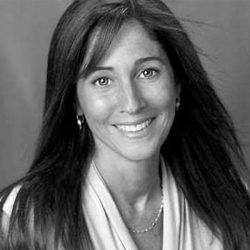
Dr. Caroline Glicksman
EEUU
Resumen
Enfermedad de los implantes mamarios: Debate sobre la investigación actual
El ASERF síntomas sistémicos en mujeres, primer estudio prospectivo ciego que compara a mujeres con enfermedad autodescrita por implantes mamarios con dos grupos de control: mujeres con implantes mamarios que no atribuyen sus síntomas sistémicos a sus implantes y mujeres sometidas a una mastopexia cosmética sin antecedentes de ningún dispositivo implantado. Se evaluaron datos cualitativos observados al inicio del estudio, a las 3-6 semanas, a los 6 meses y al año, así como bioespecímenes recogidos el día de la intervención quirúrgica. Al año, el 94% de la cohorte de BII había experimentado una mejoría al menos parcial de los síntomas tras la retirada del implante, y dicha mejoría se produjo independientemente del tipo de capsulectomía realizada.
Los datos de bioespecímenes no revelaron anomalías en los niveles de hemograma, tiroides o vitamina D ni en la cohorte BII ni en la cohorte de control. No hubo diferencias estadísticas en la positividad de la secuenciación de próxima generación (NGS) para el ADN bacteriano en la superficie del implante o dentro de la cápsula entre la cohorte BII y la no BII. Se completó la evaluación adicional de bioespecímenes para detectar anomalías en las citocinas séricas, las enterotoxinas y la histología de la cápsula. Este estudio, publicado en la revista Aesthetic Surgery Journal, es una buena noticia para las mujeres que creen que sus implantes están relacionados con sus síntomas sistémicos. Se suma a la creciente literatura revisada por pares que documenta que la capsulectomía no contribuye a la mejora de los síntomas. Actualmente, estamos redactando el cuarto artículo que revisará los datos del estudio de un año y discutirá la evidencia sustancial que apoya etiologías potenciales alternativas para los síntomas sistémicos que algunas mujeres atribuyen a sus implantes mamarios.
Ecografía de alta resolución para cirujanos plásticos
La ecografía de alta resolución (HRUS) es cada vez más frecuente en las consultas de cirugía plástica para detectar la rotura de implantes antes de la cirugía de revisión.
Para detectar la rotura de implantes antes de la cirugía de revisión. También se utiliza para mejorar el seguimiento general y controlar mejor a los pacientes con implantes mamarios. La IRM ha sido durante mucho tiempo el método imágenes de implantes mamarios, pero es costosa y poco utilizada. Como resultado, en 2019 la FDA publicó una guía que recomienda el uso de HRUS para detectar la rotura en mujeres asintomáticas con implantes mamarios.
Dada esta recomendación y la conveniencia de una ecografía como prueba de detección, muchos médicos han comenzado a integrar la HRUS en sus prácticas de cirugía plástica.
El uso de la ecografía HRUS para obtener imágenes de un implante es una herramienta de cribado relativamente fácil de aprender a utilizar, y el proceso real de visualización de un implante sólo lleva unos minutos. La ecografía de ultrasonidos de alta resolución puede utilizarse para detectar diversos problemas de los implantes, aparte de las roturas, como el fallo de la cubierta, la rotación del implante, los pliegues del implante, el hematoma y el seroma. La ecografía de ultrasonido de mama también es una herramienta de detección útil para las pacientes que están ansiosas o preocupadas por una posible mama hinchada o una rotura «silenciosa». La HRUS también es un complemento útil para otros procedimientos de cirugía plástica, como la cirugía de contorno corporal y los procedimientos faciales.
CV Summary
Dra. Caroline Glicksman, MSJ, FACS
En ejercicio desde 1992, la Dra. Glicksman es autora de numerosos capítulos de libros de texto y artículos revisados por expertos. Imparte conferencias a nivel nacional e internacional sobre la gestión de las complicaciones de los implantes mamarios, la enfermedad de los implantes mamarios, la ecografía de alta resolución y la educación de los pacientes en el aumento mamario y la cirugía de revisión. Es profesora clínica de cirugía plástica en la Facultad de Medicina Hackensack Meridian y profesora itinerante de la Sociedad Americana de Cirujanos Plásticos Estéticos. Es presidenta electa de la Fundación para la Educación e Investigación en Cirugía Estética (ASERF) y Copresidenta del Comité de Investigación Científica de la ASERF. Sigue presidiendo la reunión anual de la Aesthetic Society Experienced Insights Breast and Body y es editora clínica de la revista Aesthetic Surgery Journal (ASJ).
Es la primera mujer directora médica de un ensayo clínico sobre implantes mamarios en EE.UU., el Estudio Clínico Básico sobre Implantes Mamarios Motiva. Es titular de tres patentes estadounidenses relacionadas con la cirugía mamaria y en 2020 finalizó su máster en Derecho Farmacéutico, Dispositivos Médicos y Cumplimiento de la Ley en la Facultad de Derecho de Seton Hall. Tiene cuatro hijos, un gran danés y un marido cirujano ortopédico y jugador de golf.
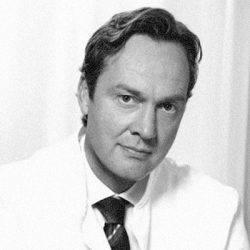
Dr. Stefan Gress
ALEMANIA
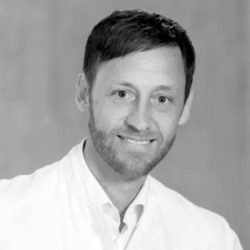
Dr. Sebastian Haack
ALEMANIA
Resumen
Enderezamiento de la nariz
El enderezamiento de la nariz es una de las partes más difíciles de la rinocirugía. La desviación puede contribuir o no a la alteración de la respiración nasal. La mejora de la respiración nasal es uno de los componentes de la corrección de las desviaciones del eje. Pero para una respiración adecuada no es necesaria una nariz absolutamente recta. Por lo tanto, el enderezamiento también es importante para mejorar el aspecto estético de la nariz. Deben aplicarse varias estrategias en función de la patología. Esto incluye maniobras de empuje, así como técnicas estructurales clásicas. Demostraremos en qué situación utilizaríamos cada técnica.
Cartílago costal en la rinoplastia
Muchas razones pueden llevar a la necesidad de cartílago costal en la rinoplastia. Las variaciones hipoplásicas congénitas, así como los casos postraumáticos o de revisión pueden ser algunas de estas situaciones. El uso de cartílago costal es un procedimiento rutinario en la actualidad. No obstante, deben tenerse en cuenta algunos puntos cuando se trabaja con cartílago costal. En nuestra presentación demostraremos nuestra estrategia para la recolección de costillas y el control de la forma de los injertos de cartílago. La segunda parte de la presentación demostrará cómo utilizar la costilla para el injerto. De este modo, utilizaremos la costilla tanto para injertos estructurales como para injertos de contorno.
CV Summary
El Dr. Sebastian Haack es cirujano plástico colegiado y se dedica exclusivamente a la cara.
Dirige la clínica de cirugía plástica facial del Marien hospital de Stuttgart (Alemania) desde 2015. Es el sucesor del Prof. Wolfgang Gubisch.
Su principal interés es la rinocirugía primaria, secundaria y reconstructiva.
Otro foco es el tratamiento de pacientes con cáncer de piel. Por lo tanto, de nuevo la nariz está en el foco de interés. La clínica de cirugía plástica facial de Stuttgart es el departamento líder en reconstrucción autógena total de la nariz en Alemania.
El Dr. Haack comenzó su formación en cirugía plástica en 2003 en el Centro de Cirugía Plástica del Marien hospital de Stuttgart. Recibió formación de los profesores Michael Greulich y Wolfgang Gubisch. Recibió su formación en cirugía de quemaduras en la clínica de traumatología BG de Tübingen.
Obtuvo la certificación en 2010. Un año más tarde se convirtió en médico jefe de la clínica de cirugía plástica facial y a principios de 2014 médico jefe y sustituto del Prof. Gubisch.
Desde el comienzo de su carrera da conferencias a nivel nacional e internacional. Ha escrito capítulos de libros y publicado en revistas revisadas por pares. Ha impartido varios cursos de cirugía en directo y organiza un curso de rinoplastia de renombre internacional en Stuttgart.
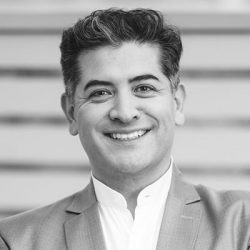
Dr. Alfredo Hoyos
COLOMBIA
CV Summary
Dr. Alfredo Hoyos
Dr. Alfredo Hoyos, Inventor de la técnica de lipoescultura de alta definición y de otras técnicas innovadoras de lipoescultura como Eve High Def (abdominoplastia completa de alta definición) y Fit Mommy High Def (miniabdominoplastia de alta definición).
Autor de un libro único que presenta todas las técnicas avanzadas en lipoplastia e injerto de grasa autóloga para la escultura corporal de alta definición: El primero que tituló: High Definition Body Sculpting Art and Advanced Lipoplasty Techniques, y ahora se lanza su segundo libro Total Definer, Atlas of Advanced Body Sculpting.
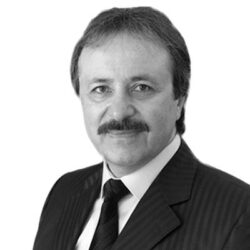
Dr. Kazbek Kudzaev
RUSIA
Resumen
Método personal para reducir la circunferencia de la cintura con conservación de costilla
Desde el año 2016 se han operado 248 pacientes que desean tener una cintura más estrecha, con un índice de masa corporal no mayor a 25. Cerca de la mitad de estos pacientes pretendían extirpar quirúrgicamente las costillas 11 y 12 bilateralmente, para estos pacientes se les ofreció una técnica alternativa. Para formar una cintura estrecha, todos los pacientes se sometieron a una corticotomía parcial correctiva con osteoclasia de 11 y 12, en casos específicos se realizó el mismo procedimiento sobre el 10 par costal, seguido de un corsé especial hasta que los fragmentos óseos se fusionaron en una posición más estética. Durante los primeros 5 años se operaron también 9 pacientes transgénero lo que convierte el procedimiento en parte del complejo de cirugías para feminización.
Los resultados a largo plazo: en el 94% de los pacientes, se logró la corrección de la parte inferior del tórax en forma de un estrechamiento de la cintura de 5 a 12 cm.
El método kudzaev para la reducción de la circunferencia de la cintura con preservación de las costillas es una alternativa a la resección de las costillas. Es mínimamente invasivo, menos traumático y respeta la anatomía corporal.
CV Summary
Dr. Kazbek Kudzaev
Kazbek Kudzaev: Se desempeña como jefe del Centro de Ortopedia y Cirugía Estética. Candidato a ciencias Médicas, cirujano de alta categoría, miembro de: Sociedad Rusa e Internacional de Cirujanos Plásticos y Estéticos, Sociedad Rusa de Artroscopia. Realizo su tesis doctoral en el Research Institute of Traumatology and Orthopaedics profesor ILIZAROV, estudios en USA (Michigan), con especialistas de República Checa, Alemania, Francia, Holanda, Italia. Profesor Honorario del Centro Ilizarov, Vladikavkaz, Rusia
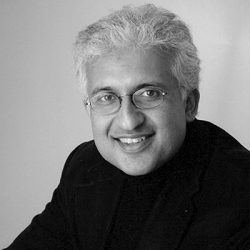
Dr. Raman Malhotra
INGLATERRA
Resumen
Reconstrucción del parpado.
La lectura se centrará en las nuevas opciones para reconstrucción del parpado, haciendo énfasis en las modificaciones para reconstrucción canto medial con utilización de colgajos y los desafíos en la reconstrucción del parpado en niños con defectos complejos del parpado.
Nuevas perspectivas en la blefaroplastia posterior
La conferencia tratará sobre los principios para abordar la contracción de la lamela media tras la blefaroplastia y el canto lateral.
CV Summary
Dr. Raman Malhotra
Raman Malhotra es cirujano oftalmólogo y oculoplástico consultor en el Queen Victoria Hospital de East Grinstead (Reino Unido).
Entre sus especialidades se incluyen la cirugía oculoplástica en enfermedades de la superficie ocular, la rehabilitación de parálisis faciales, la cirugía reconstructiva de párpados y órbita, la cirugía endonasal lagrimal, la distonía facial y el rejuvenecimiento estético de párpados. También dirige un programa internacional de becas de formación.
Ha desarrollado la fresa endonasal DCR y el punzón endonasal Malhotra. En 2013 desarrolló la cadena de segmentos Malhotra Platinum para la carga del párpado superior en la parálisis facial. En 2015, describió e informó sobre la almohadilla de grasa de la aponeurosis post-elevator, una capa de grasa en el párpado no reconocida previamente en los libros de texto de anatomía.
Ha publicado más de 200 artículos de investigación revisados por pares, capítulos de libros y libros. Ha sido editor de sección del British Journal of Ophthalmology durante 10 años y es editor de sección de Clinical Experimental Ophthalmology. Forma parte del consejo editorial de Orbit.
Ha recibido el Premio a los Logros de la Academia Americana de Oftalmología y el Premio Nacional de Plata a la Excelencia Clínica del Ministerio de Sanidad.
Es miembro fundador de la British Oculoplastic Surgeons Society (BOPSS) y miembro de la European Society of Ophthalmic, Plastic and Reconstructive Surgeons (ESOPRS) y de la American Society of Ophthalmic, Plastic and Reconstructive Surgeons (ASOPRS).
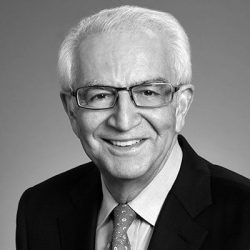
Dr. Foad Nahai
EEUU
Resumen
Lifting Facial a Medida o Estilo Libre
Los objetivos del rejuvenecimiento facial son un resultado natural, sin los estigmas de un lifting, con mínimo riesgo y morbilidad. Recuperación rápida.
No todos los rostros envejecen igual, no todos los rostros tienen la misma morfología, ni todos los rostros deben rejuvenecerse de la misma manera. No existe “talla única» ni «lifting facial para todas las estaciones». El procedimiento debe ser individualizado, a medida, personalizado para cada paciente en función de su morfología, grado de envejecimiento, grado de desinflamación y cambios cutáneos. “Un procedimiento a medida”
Existen muchas técnicas descritas para el rejuvenecimiento facial. Cada una incluye incisión, longitud de la incisión, niveles de disección, reposicionamiento del tejido profundo y suspensión. Todas estas numerosas técnicas tienen cinco cosas en común:
1. Todas incluyen la incisión en la cara, el cuello y el cuero cabelludo.
2. Todas incluyen la socavación de la piel.
3. Todas incluyen movilización y/o plicatura de tejidos profundos.
4. Todas incluyen la gestión del volumen.
5. Todos incluyen procedimientos auxiliares para mejorar el resultado.
Cada uno de los cinco factores anteriores debe modificarse individualmente para adaptarse a las necesidades únicas del paciente.
del paciente. Se presentarán ejemplos de cómo se adapta cada uno de ellos de forma individual con el Bespoke, «lifting facial de estilo libre». Se hará hincapié en cómo la longitud y la ubicación de la incisión, el grado de socavación de la piel, el SMAS y la gestión del volumen, y los procedimientos auxiliares se individualizan para cada paciente para obtener resultados óptimos. Cómo cada uno de los cinco efectos de la calidad, la longevidad del resultado final y reducir al mínimo la morbilidad.
CV Summary
Dr. Foad Nahai
Foad Nahai es catedrático de Cirugía Plástica Maurice J. Jurkiewicz y profesor de Cirugía en la Universidad Emory de Atlanta (Georgia). Es redactor jefe de Aesthetic Surgery Journal y ex presidente de varias organizaciones, entre ellas la Asociación Americana para la Acreditación de Centros Quirúrgicos Ambulatorios, la Sociedad Americana de Cirugía Plástica Estética, la Sociedad Internacional de Cirugía Plástica y presidente del Consejo de Investigación de Cirugía Plástica. El profesor Nahai ha publicado más de 260 artículos revisados por expertos y ha editado o coeditado 14 libros de texto que abarcan todos los aspectos de la cirugía plástica reconstructiva y estética.
El profesor Nahai goza de reconocimiento internacional como innovador en el campo de la cirugía plástica, en el que ha desarrollado y perfeccionado numerosos procedimientos estéticos y reconstructivos.
El profesor Nahai ha sido invitado a dar conferencias y realizar demostraciones de procedimientos de cirugía plástica en todo el mundo. Además de numerosos honores y premios profesionales, figura en la lista de los «Mejores médicos de América» y ha sido incluido en la revista W Magazine como uno de los mejores cirujanos plásticos del mundo.
El profesor Nahai está acreditado por la Junta Americana de Cirugía Plástica y fue director de la misma durante 6 años. Es miembro del Colegio Americano de Cirujanos. Ha sido galardonado por numerosas organizaciones de todo el mundo, entre ellas la beca honoraria del Real Colegio de Cirujanos de Inglaterra y Tailandia.
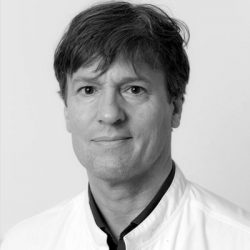
Dr. Dion Paridaens
HOLANDA
Resumen
Cantoplastia lateral versus cantopexia en blefaroplastia inferior
La preservación o restauración de un contorno y aposición óptimos de los párpados es esencial en la blefaroplastia inferior, un procedimiento que se realiza principalmente por razones estéticas.
Se están utilizando diversas técnicas para lograr estos objetivos. Se discuten técnicas seleccionadas que incluyen la cantopexia con sutura simple y la cantoplastia con sutura doble a través del párpado inferior, se explican y muestran las preferencias del autor. Se discuten las indicaciones de la cantoplastia y la cantopexia, así como los retos de un vector negativo en la blefaroplastia inferior, por ejemplo, en caso de proptosis (exoftalmos) o de un hueso maxilar plano. Por último, se aborda la elección de las suturas: ¿necesitamos suturas no reabsorbibles para un efecto duradero?
Corrección quirúrgica de la retracción del párpado inferior
La retracción del párpado inferior tiene múltiples causas. El acortamiento de la lamela posterior puede ser el resultado de condiciones inflamatorias conjuntivales, por ejemplo, trastornos alérgicos. El acortamiento de la lamela anterior puede deberse a enfermedades inflamatorias de la piel, cicatrices (profundas) y/o eliminación excesiva de piel en la blefaroplastia inferior.
El restablecimiento de un contorno y una aposición normales del párpado en pacientes con retracción del párpado inferior es beneficioso para el paciente, no sólo desde el punto de vista funcional, sino también estético.
Tras la evaluación de la causa, el cirujano puede abordar el tratamiento adecuado.
En esta presentación discutiremos las opciones quirúrgicas para la corrección de la retracción del párpado inferior, incluyendo la importancia de la adhesiolisis, el uso de injertos conjuntivales, espaciadores, injertos libres de piel y lifting del tercio medio facial. Y… ¿qué factores pueden socavar el resultado deseado?
CV Summary
Doctor en Medicina Dion Paridaens
CIRUJANO OCULOPLÁSTICO, LAGRIMAL Y ORBITARIO
Cargo actual:
– Jefe del Centro Orbital, Hospital Oftalmológico de Rotterdam y Centro Médico Erasmus.
– Jefe del Programa de Residencia Rotterdam Eye Hospital (desde 2020)
– Director Oculoplastic & Orbital Fellowship (desde 2001)
– Secretario de Honor de la Sociedad Europea de Cirugía Oftálmica Plástica y Reconstructiva (ESOPRS) (desde septiembre de 2014 hasta septiembre de 2022).
– Presidente electo ESOPRS desde 2021
– Miembro fundador y vicepresidente de la Sociedad Orbitaria Holandesa
Formación anterior:
– 1982-1989: formación médica en la Universidad de Utrecht
– 1990-1992: formación en oncología en el Moorfields Eye Hospital y el Instituto de Oftalmología de Londres.
– 1992-1996: residencia en oftalmología, FC Donders Institute Utrecht
– 1997: becario orbital visitante de Jack Rootman en Vancouver, Columbia Británica
Otras funciones:
– 1997 – 2010: Redactor jefe de la revista internacional Orbit.
– 2011 – 2016: Profesor a tiempo parcial en los Hopitaux Universitaires de Geneve, Suiza.
– 2017 – : Miembro fundador del Centro de Tiroides de Rotterdam.
– 1997 – : Conferenciante invitado y cirujano invitado en varios países de todo el mundo
– 1997 – : Asesor médico de varias organizaciones de pacientes en los Países Bajos
– 2020- 2021: Editor de sección de Acta Ophthalmologica
– 2021- : Editor de sección British Journal of Ophthalmology
Logros científicos:
– 1993 Tesis doctoral sobre melanoma periocular, galardonada con el Premio FC Donders en 1995
– Ha publicado más de 190 artículos (PUBMED), varios capítulos de libros y DVD educativos y una aplicación para iPhone sobre cirugía oculoplástica y descompresión orbitaria.
– Ha supervisado a varios estudiantes de doctorado
Áreas de investigación: Orbitopatía de Graves, enfermedades inflamatorias orbitarias específicas, tumores perioculares e intraoculares y cirugía de párpados y lagrimal.
Socialmente: Dion Paridaens está casado y es el orgulloso padre de tres adolescentes.
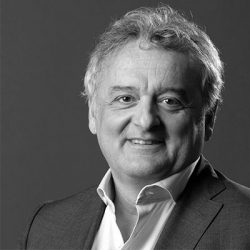
Dr. Pier Paolo Rovatti
ITALIA
Resumen
DISPOSITIVOS BASADOS EN LA ENERGÍA PARA MEJORAR LA CONTRACCIÓN DE LOS TEJIDOS BLANDOS
Los dispositivos estéticos basados en energía se utilizan para el tratamiento y control de las arrugas, la piel dañada por el sol y la laxitud cutánea.
Este trabajo analiza cómo la remodelación de la ptosis cutánea puede conseguir un gran tensado con EBD.
El mercado de los dispositivos basados en energía es amplio y creciente y existe una gran variedad de tratamientos que utilizan láseres y dispositivos basados en energía en procedimientos estéticos.
En este trabajo describimos las diferentes características de los EBD existentes en el mercado y sus propiedades.
Los dispositivos estéticos basados en energía se utilizan para abordar una amplia gama de aplicaciones estéticas como el rejuvenecimiento cutáneo, el estiramiento de la piel y el contorno corporal. Estos dispositivos se basan en tecnología mínimamente invasiva y no invasiva.
Los EBD son dispositivos precisos y selectivos que incluyen longitudes de onda ajustables que permiten diferentes opciones de tratamiento.
La mayor demanda de dispositivos basados en la energía sigue correspondiendo al cuerpo: eliminación de grasa, contorno corporal y estiramiento de la piel del rostro.
En particular, los dispositivos de radiofrecuencia (RF) para el estiramiento de la piel funcionan bien, pero también hay varios competidores fuertes en el campo de la reducción de grasa.
La clave está en suministrar la energía a una profundidad suficiente para que marque la diferencia sin dañar al paciente ni los tejidos circundantes.
El tamaño del mercado mundial de dispositivos estéticos basados en energía se valoró en 5,1 mil millones de dólares en 2021 y se espera que se expanda a una tasa de crecimiento anual compuesta del 13,8% desde 2022 hasta 2030. Además, los avances tecnológicos en dispositivos estéticos impulsan el crecimiento del mercado.
El objetivo clave de los dispositivos estéticos basados en energía es reducir el exceso de piel flácida o eliminar la grasa obstinada para lograr el estiramiento de la piel.
Multimodal radiofrequency application for lower face and neck
El objetivo del trabajo es resaltar cómo la remodelación del tercio inferior de la cara con este equipo nos permite restaurar el perfil mandibular y la ptosis cutánea del cuello, obteniendo una buena retracción cutánea.
Por remodelación con radiofrecuencia entendemos la manipulación del tejido adiposo subcutáneo del cuello a través de una sonda que emite una radiofrecuencia bipolar desde una pieza de mano que dispone de dos electrodos, uno cutáneo externo y otro interno que se introduce en el subcutáneo y que son los dos polos a través de los cuales la radiofrecuencia calienta el tejido por todo el espesor atravesado por la pieza de mano.
MATERIALES Y MÉTODOS
Fueron tratados 68 pacientes en un año, de los cuales 64 eran mujeres y 4 varones.
La cirugía se realizó de forma ambulatoria bajo anestesia local en casi todos los casos, excepto en tres casos en los que el método se asoció a otras intervenciones y, por lo tanto, se realizó bajo anestesia general.
Criterios de inclusión: Los pacientes tratados tenían entre 28 y 67 años.
Criterios de exclusión: laxitud cutánea excesiva, pérdida de peso significativa reciente.
El tratamiento se realizó en una sesión quirúrgica, salvo en un caso que requirió retoques al cabo de 6 meses.
Control y feedback clínico: inmediato, a 1m y a 6m.
Métodos de medición y análisis: Fotografía digital estandarizada, satisfacción del paciente con respuesta a un minicuestionario estandarizado.
RESULTADOS
Los resultados aportaron evidencias de mejoría en casi todos los pacientes que apreciaron la restauración del tono cutáneo en el cuello y la mejoría del perfil mandibular sin complicaciones significativas.
CONCLUSIONES
El tratamiento con el uso de RF tuvo una respuesta extremadamente positiva en el 95% de los pacientes tratados y satisfactoria en el 5%.
Las complicaciones comunicadas fueron menores y transitorias: edema de las zonas tratadas durante unos 20/30 días, hematoma en aproximadamente el 20% de los casos, disartria modesta en dos pacientes durante 48 h probablemente debida a la anestesia local.
CV Summary
Dr. Pier Paolo Rovatti
Médico asistente en la 1ª División Clínica de Cirugía del hospital de Verona desde 1984 y luego con la función de ayuda corresponsable al Departamento de Urgencias del Hospital Civil de Verona hasta 2006.
– Asistió como director médico del Centro Médico Láser de Verona de 1986 a 1990 y posteriormente a cargo de la unidad operativa de cirugía plástica del Centro Láser hasta 1994.
– Ha sido vicepresidente de la AMIA, Asociación Italiana Anti Aging Doctors desde 2004.
Práctica privada desde 1985 en estructuras privadas en Verona y Milán.
Actualmente es propietario y director de PPR Day clinic en Verona, una clínica privada de cirugía de día.
Ha publicado 38 artículos en revistas nacionales e internacionales. Ha participado en talleres de especialización en el extranjero:
Usuario desde 1984 Láser CO₂ ha desarrollado técnicas personales y contribuido a la divulgación de la tecnología láser a través de la publicación en revistas científicas, capítulos de libros de educación científica y participacion en muchas conferencias como ponente.
En colaboración con el Instituto de Cirugía Plástica de la Universidad de Padua, dirigido por el Prof. Mazzoleni desde 2004 ha seguido los procedimientos de estandarización de las directrices del sistema de sutura endoscópica para el lifting endoscópico del tercio medio.
Ha sido vicepresidente de AMIA (Asociación de Médicos Italianos de Antienvejecimiento).
Profesor en la escuela de postgrado de medicina estética y Anti envejecimiento en AGORA ‘en Milán con respecto a la cirugía plástica facial y corporal.
Se desarrolló el protocolo sobre el método italiano de la utilización de la lipólisis de plasma en colaboración con el Dr. A. Minami (Tokio) y el Dr. T.Takahashi (Corea)
De 2009 a 2011, Jefe del departamento de cirugía plástica estética operatoria de la Clínica Villa St. Anna Merano.
Fue director de la Academia Médico Estética de Cirugía Estética Eubeauty hasta diciembre de 2013 (Verona)
KOL para el Consejo Científico de Merz Estética Italia, impartiendo cursos, master class y talleres a los médicos en Italia y Europa, la mayoría en una técnica particular inventado por él.
Invitado en numerosos programas de televisión de las principales cadenas de televisión italianas.
Miembro del comité científico de la Sociedad Italiana de Medicina Estética AGORA.
Ha sido invitado como ponente en un gran número de conferencias científicas internacionales e italianas.
Es el KOLtrainer oficial para el contorno corporal y facial con RF para Invasix Ltd (Israel) y es invitado a mostrar su técnica quirúrgica particular en todos los países del mundo.
Organiza cada mes cursos de formación para cirujanos procedentes de todo el mundo en los que enseña una técnica quirúrgica particular para el lifting del tercio inferior de la cara, muy conocida en todas partes, creada y modificada por él.
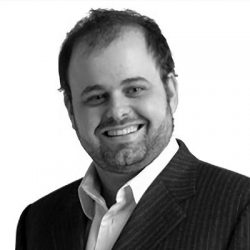
Dr. Marcos Sforza
INGLATERRA

Dr. Bart Stubenitsky
HOLANDA
Resumen
Técnicas de camuflaje en la rinoplastia de preservación
La rinoplastia de preservación (RP) ha transformado nuestra forma de abordar la cirugía de rinoplastia primaria al pasar de la enseñanza estándar de reducir y reconstruir al concepto de preservar y remodelar.
A pesar de la mejor preparación y planificación preoperatoria, pueden surgir problemas. Sobra decir que la elección del procedimiento correcto para cada caso es primordial. Para evitar complicaciones, es esencial tener una idea clara de cuándo utilizar técnicas de rinoplastia de preservación y cuándo es mejor no utilizarlas.
Afortunadamente, la mayoría de los problemas que se observan pueden prevenirse fácilmente y, lo que es más importante, corregirse con facilidad en el postoperatorio.
Esta presentación se centra en los problemas más comunes que pueden producirse durante la cirugía y en el enfoque óptimo para solucionarlos. Se discutirán y demostrarán técnicas de camuflaje tanto para el dorso como para la punta.
Elegir la técnica de preservación óptima
La rinoplastia de preservación (RP) ha transformado nuestra forma de enfocar la cirugía de rinoplastia primaria al pasar de la enseñanza estándar de reducir y reconstruir al concepto de preservar y remodelar.
La PR consta de los 3 elementos siguientes 1) elevar el colgajo cutáneo en el plano subpericondrial-subperióstico; 2) preservar el dorso osteocartilaginoso; y 3) mantener los cartílagos alares con una escisión mínima mientras se consigue la forma deseada mediante suturas.
Está evolucionando un repertorio creciente de técnicas de PR, y se han propuesto muchas variaciones de técnicas establecidas desde que Daniel introdujo este término en 2018.
Por lo tanto, es esencial tener una comprensión clara de qué técnica de preservación usar para qué nariz y darse cuenta de cuándo no usar la rinoplastia de preservación.
Esta presentación ofrecerá una visión general de las diferentes técnicas que abordan tanto la bóveda osteocartilaginosa como la punta. Se centra en la prevención y corrección de los problemas más comunes mediante el siguiente algoritmo:
- 1) análisis de la nariz
- 2) planificación visual del resultado estético deseado
- 3) elección de la técnica óptima.
1
CV Summary
Dr. Bart Stubenitsky
Nacido en Washington DC, el Dr. Bart Stubenitsky se licenció en Medicina en el Centro Médico Universitario de Maastricht (Países Bajos) y posteriormente se doctoró.
Completó su residencia en cirugía plástica y reconstructiva en el Centro Médico Universitario de Utrecht (Países Bajos). El Dr. Stubenitsky realizó tres estudios de posgraduación distintos en cirugía facial craneomaxilofacial, de fisuras y estética en la Universidad de Toronto (Canadá).
Tras trabajar como consultor en cirugía craneofacial y de fisuras, se incorporó a una clínica de cirugía facial estética y con énfasis en rinoplastia. Ahora tiene su propia clínica centrada exclusivamente en rinoplastias.
En su tiempo libre trabaja como voluntario para “Operation Smile “realizando operaciones de fisura en países del tercer mundo.
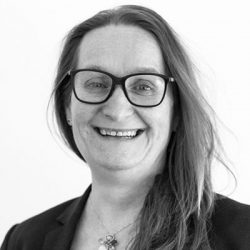
Dr. Sinikka Suominen
FINLANDIA
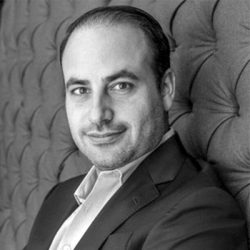
Dr. Ben Talei
EEUU
Resumen
Elementos dimensionales en el lifting facial y de cuello plano profundo y el pliegue mastoideo.
Esta presentación revisará los procedimientos de lifting facial y de cuello extendido, profundo, avanzado y ampliado, centrándose en la liberación adecuada de los puntos de anclaje de los tejidos blandos para conseguir un tipo de lifting más sustancial y natural posible. Esto incorporará puntos de aprendizaje sobre técnicas avanzadas para el rejuvenecimiento del cuello, incluyendo el retroceso laríngeo y el pliegue mastoideo.
Rejuvenecimiento del smas con PHAT (terapia adiposa hibridizada con plaquetas)
Usando una combinación de injerto de grasa, junto con el uso de nano, grasa y adiposo, células madre derivadas, mezclado con plasma rico en plaquetas, somos capaces de obtener mejoras milagrosas para las víctimas de quemaduras, cabello, pérdida, los pacientes, y los pacientes con cicatrices en o debajo de la piel
Diseño de Cupid Lift para el lifting labial plano profundo
En esta presentación se revisará la técnica de lifting de labios en plano profundo, que permite realizar la cirugía con menos riesgos y cicatrices. También revisaremos el diseño del lifting de Cupido, que es una representación matemática de un concepto artístico para mantener el equilibrio durante el procedimiento de lifting de labios y mejorar los resultados y la sensualidad.
Lifting de cejas vectorizado con incisiones híbridas y sin endoscopio
Esta conferencia ayudará al público a comprender mejor los vectores del envejecimiento de las cejas y cómo manipular dichos vectores correctamente en el plano profundo del cuero cabelludo para obtener una mejora universal de todas las partes de las cejas y la frente durante el procedimiento de lifting de cejas, al tiempo que se mejora la función de las cejas, la dinámica y el frontal. También revisaremos los conceptos incorrectos de sobrecorrección que luchan contra la fijación
CV Summary
Dr. Ben Talei
El Dr. Ben Talei es un cirujano plástico facial en Beverly Hills, centrándose en procedimientos avanzados de envejecimiento facial, utilizando técnicas de plano profundo para la cara, los labios y las cejas, así como procedimientos avanzados en la región ocular. Él es un director de fellowships de la Academia Americana de cirugía plástica facial y reconstructiva, así como un profesor en Monterrey México para la cirugía plástica. Se formó en la Universidad de Columbia y la Universidad de Cornell en cirugía de cabeza y cuello, seguido de dos fellowships en la ciudad de Nueva York.
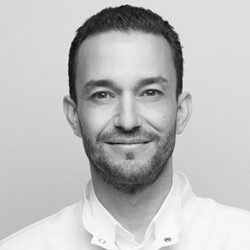
Dr. Nestor Torio
ALEMANIA
Resumen
Liposucción para el tratamiento del lipedema, sí, pero…
La liposucción es definitivamente una de las opciones de tratamiento del lipedema. Pero, ¿deben o pueden tratarse con liposucción todos los pacientes afectados? Actualmente, la mayoría de los pacientes con lipedema no reciben la información adecuada sobre su enfermedad y, por lo tanto, muchos de ellos no son tratados correctamente. Una de las razones es que muchos médicos y profesionales implicados en su tratamiento están mal informados. Los puntos de desinformación más comunes son la obesidad y el alivio del dolor tras la liposucción. El síndrome del lipedema es más complejo de lo que creemos, y su tratamiento necesita definitivamente un enfoque multidisciplinar. Por este motivo, la Asociación Internacional del Lipedema (ILA) fue creada en 2021 por expertos en el tratamiento del lipedema de todo el mundo con el objetivo de ofrecer las mejores opciones de tratamiento a los pacientes con lipedema. Todos los expertos de la ILA coincidieron en que la liposucción puede producir una mejora del lipedema del paciente, pero la correcta selección de los pacientes según criterios médicos es el factor decisivo para el éxito terapéutico.
CV Summary
Nestor Torio-Padron, MD
El Prof. Dr. Nestor Torio completó su formación de residencia en cirugía plástica y reconstructiva en el Centro Médico – Universidad de Friburgo, Alemania, y trabajó allí como adjunto durante seis años más. Debido a una intensa cooperación durante este tiempo con la Clínica Földi en Alemania, el Prof. Torio tiene 14 años de experiencia en el tratamiento conservador y quirúrgico de las enfermedades linfológicas y el síndrome de lipedema. Desde 2015 ejerce en una clínica que funda el mismo de cirugía plástica en Friburgo (Alemania) y Basilea (Suiza) y está especializado, entre otros, en el tratamiento quirúrgico de pacientes con lipedema. Como miembro de la facultad, el Prof. Torio también imparte clases en la Facultad de Medicina de la Universidad de Friburgo.
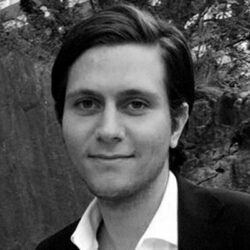
Sr. Johan Andersson
SUECIA
Resumen
Value in breast aesthetics
La inflación aumenta y los precios de la cirugía mamaria siguen una tendencia a la baja.
El multimillonario sector de la cirugía mamaria carece de estrategias de fijación de precios, propuesta de valor y diferenciación de productos.
La cirugía mamaria suele considerarse una mercancía, ya que muchas clínicas ofrecen lo mismo.
Los consumidores no son capaces de diferenciar la mejor solución para ellos y los plazos de consideración de la estética mamaria son de cuatro a siete años, algo que impide la expansión del mercado.
El sector de los implantes mamarios registra un crecimiento de un solo dígito o está estancado en muchos mercados.
Los cirujanos plásticos suelen creer que el precio es crucial en la estética mamaria. Los cirujanos plásticos son uno de los grupos de especialidad menos satisfechos en cuanto a remuneración en comparación con cualquier otra especialidad.
Crear valor es maximizar los beneficios con un precio adecuado.
Las propuestas de valor están diseñadas para mejorar los resultados de los pacientes y son beneficiosas para el cirujano, pero a veces se abusa de ellas con alternativas de bajo coste.
La fijación de precios a los pacientes se basa en lo que cobran los competidores, un punto de precio del que a menudo no tenemos datos que lo respalden. La elasticidad de los precios y la ciencia de los datos son inexistentes en una industria multimillonaria.
Es necesario alinear las normas de calidad, la innovación y el liderazgo intelectual en el sector.
Crear nuevas ventajas para el consumidor y precios adecuados es vital para la sostenibilidad de la estética mamaria.
CV Summary
Johan Andersson
Johan es un emprendedor en serie que ha creado, dirigido e invertido en múltiples negocios en los sectores de la salud, la estética, la tecnología, los dispositivos médicos y las finanzas. Lidera desde el principio y ha participado activamente en todos sus proyectos. Johan ha estado involucrado materialmente en la construcción de 8 clínicas de cirugía plástica, una en la que se quedó para dirigirla como CEO. En 2015, Johan se convirtió en el distribuidor escandinavo de Establishment Labs ESTA:NASDAQ, introduciendo la marca y convirtiéndola en líder del mercado en 2 años. En 2017, ESTA adquirió su distribución y contrató a Johan para liderar y asesorar en el área comercial y de marketing. Dentro de su mandato, ESTA salió a bolsa y creció de una capitalización de mercado de $ 28M USD a un pico de $ 2B USD. Johan dejó su puesto como jefe de Marketing en 2022 para dedicarse a sus próximos proyectos.
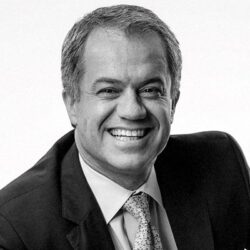
Sr. Humberto Antunes
BRASIL
Resumen
Tecnologías emergentes mínimamente invasivas en cirugías corporales
Hablaremos de los procedimientos mínimamente invasivos desde la perspectiva de los consumibles, como las neurotoxinas y los rellenos dérmicos. Por razones prácticas, excluimos de esta charla los dispositivos basados en energía de inversión de capital.
Los procedimientos mínimamente invasivos han transformado el rejuvenecimiento facial en los últimos veinte años. El desarrollo de estas tecnologías y técnicas en indicaciones corporales aún tiene recorrido. En el frente de las toxinas, hablaremos de las aprobaciones más recientes de relajantes musculares y del desarrollo de toxinas alternativas y productos adyacentes. Mencionaremos las nuevas indicaciones de los rellenos de ácido hialurónico, el papel de los bioestimuladores y las próximas mejoras tecnológicas que permitirán nuevas indicaciones y usos corporales. A más largo plazo, hablaremos de lo que podemos esperar del colágeno no derivado de animales y otros componentes de la matriz extracelular, con y sin ácido hialurónico. También hablaremos de los nuevos rellenos sin ácido hialurónico ni colágeno y revisaremos las nuevas tecnologías de terapia génica aplicadas a la medicina estética y la dermatología. Por último, revisaremos un par de tecnologías en andamiajes y eliminación o destrucción de grasa.
El mejor enfoque para un paciente determinado implicará cada vez más una consideración cuidadosa de las condiciones de salud del paciente, las características anatómicas únicas, la calidad del tejido, el perfil psicológico y los resultados deseados. Un conocimiento detallado de la anatomía, la estética y las técnicas será más necesario que nunca para dominar estos enfoques y determinar qué tipo de procedimiento es el adecuado para que el paciente obtenga los mejores resultados de la forma más segura posible.
CV Summary
Humberto C. Antunes, B.Sc.
Humberto C. Antunes, licenciado en Ciencias, es un emprendedor del sector sanitario. Participa activamente en la investigación para abordar los problemas derivados del envejecimiento demográfico, ayudando a la convergencia de las tecnologías y participando en la transformación digital de la atención sanitaria.
Humberto dirigió Galderma, una empresa farmacéutica, durante 20 años, promovió la expansión de sus negocios, creó nuevos canales, adquirió nuevos públicos y lideró transacciones de éxito que superan los 10.000 millones de dólares a lo largo de su carrera. Humberto dirigió equipos de investigación que lograron cientos de solicitudes de nuevos fármacos, solicitudes de patentes y ensayos clínicos.
Humberto es miembro de la Academia Americana de Dermatología, miembro honorario de la Sociedad Internacional de Dermatología, miembro activo de la Sociedad Dermatológica Femenina y miembro del Consejo de la Asociación Americana de la Piel. Humberto es socio de Gore Range Capital.
Humberto es licenciado en Administración de Empresas por la Universidad de Nebraska – Lincoln y el IMD de Lausana, Suiza.
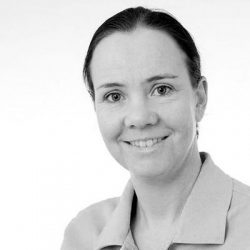
Sra. Nele Devoogdt
BÉLGICA
Resumen
Tratamiento conservador del lipedema
Actualmente, no se conoce ningún tratamiento curativo para los pacientes con lipedema. El objetivo del tratamiento conservador de los pacientes con lipedema es reducir los síntomas y las limitaciones funcionales y mejorar el bienestar psicosocial. Para obtener un buen resultado, hay que educar a los pacientes sobre el dolor, la importancia de mantenerse activos, el impacto negativo de la obesidad y la importancia de realizar las diferentes modalidades de tratamiento conservador. Una buena comprensión del paciente en estos diferentes aspectos es importante para poder realizar un automanejo adecuado. Además, los pacientes deben realizar ejercicios, recibir material de compresión adecuado y, si es necesario, ser guiados por un dietista o psicólogo. Durante la presentación se tratará con más detalle el tratamiento conservador de los pacientes con lipedema.
Evaluación del lipedema frente al linfedema
El lipedema es una afección que provoca la acumulación de un exceso de grasa en el cuerpo. El lipedema afecta con mayor frecuencia a los glúteos, los muslos y las pantorrillas. También puede afectar a la parte superior de los brazos. No afecta a las manos ni a los pies. En enero de 2020 se publicó una directriz europea sobre la evaluación y el tratamiento de los pacientes con lipedema. Esta directriz describe como primera característica importante de los pacientes con lipedema: la acumulación de tejido adiposo que se distribuye de forma desproporcionada. No hay presencia de edema y, por lo tanto, la prueba de fóvea, que es una herramienta diagnóstica del linfedema, es negativa. El tejido adiposo nunca está presente en las manos ni en los pies. Una segunda característica importante del lipedema es la presencia de dolor en los tejidos blandos de las piernas y/o los brazos en función de las regiones afectadas por el lipedema. Además, puede haber otras molestias, además del dolor, como sensación de pesadez y malestar en las piernas y/o los brazos y problemas para caminar debido a la abrasión de la parte superior de las piernas entre sí. Los pacientes con lipedema suelen padecer problemas de peso sin ninguna otra causa identificable. Además, los pacientes con lipedema suelen tener un sentimiento de autoestima disminuido debido al ideal de belleza actual. También otros factores psicológicos como el miedo, la depresión o un trastorno de estrés postraumático pueden agravar la inflamación de las células adiposas y empeorar así el dolor. Gradualmente, el mecanismo del dolor pasa del dolor nociceptivo al dolor nociplásico, caracterizado por una hipersensibilidad del sistema nervioso periférico y central. Durante mi presentación se discutirá cómo pueden evaluarse estas diferentes características en pacientes con lipedema, y en qué difiere la evaluación de los pacientes con linfedema.
CV Summary
Nele Devoogdt es fisioterapeuta y profesora en el departamento de Ciencias de la Rehabilitación de la Universidad Católica de Lovaina e investiga en el ámbito de la evaluación clínica, la prevención y el tratamiento del linfedema y el lipedema. Además, es coordinadora del centro de linfedema de los Hospitales Universitarios de Lovaina (Bélgica). Allí realiza tareas de coordinación y evaluaciones clínicas y guía los tratamientos de pacientes con linfedema y lipedema. Imparte y organiza regularmente cursos sobre linfología y oncología en Bélgica y los Países Bajos. Es fundadora de Oedema, un grupo interuniversitario que organiza cursos para fisioterapeutas en el ámbito del edema (www.oedema.be). Recientemente, ha cofundado CarEdOn, un grupo de investigación cuyo objetivo es mejorar los cuidados en edema y oncología (www.caredon.org).
| C/Pere de Montcada, 16 - 08034 Barcelona
| Tel: +34 93 203 28 12
| Email: info@clinicaplanas.com
• Aviso Legal
• Política de privacidad
• Política de cookies
• Condiciones de compra
| Paseo de la Castellana, 179, Entreplanta, 28046 Madrid
| Tel: + 34 91 571 93 90
| Email: c.lazaro@bnyco.com



